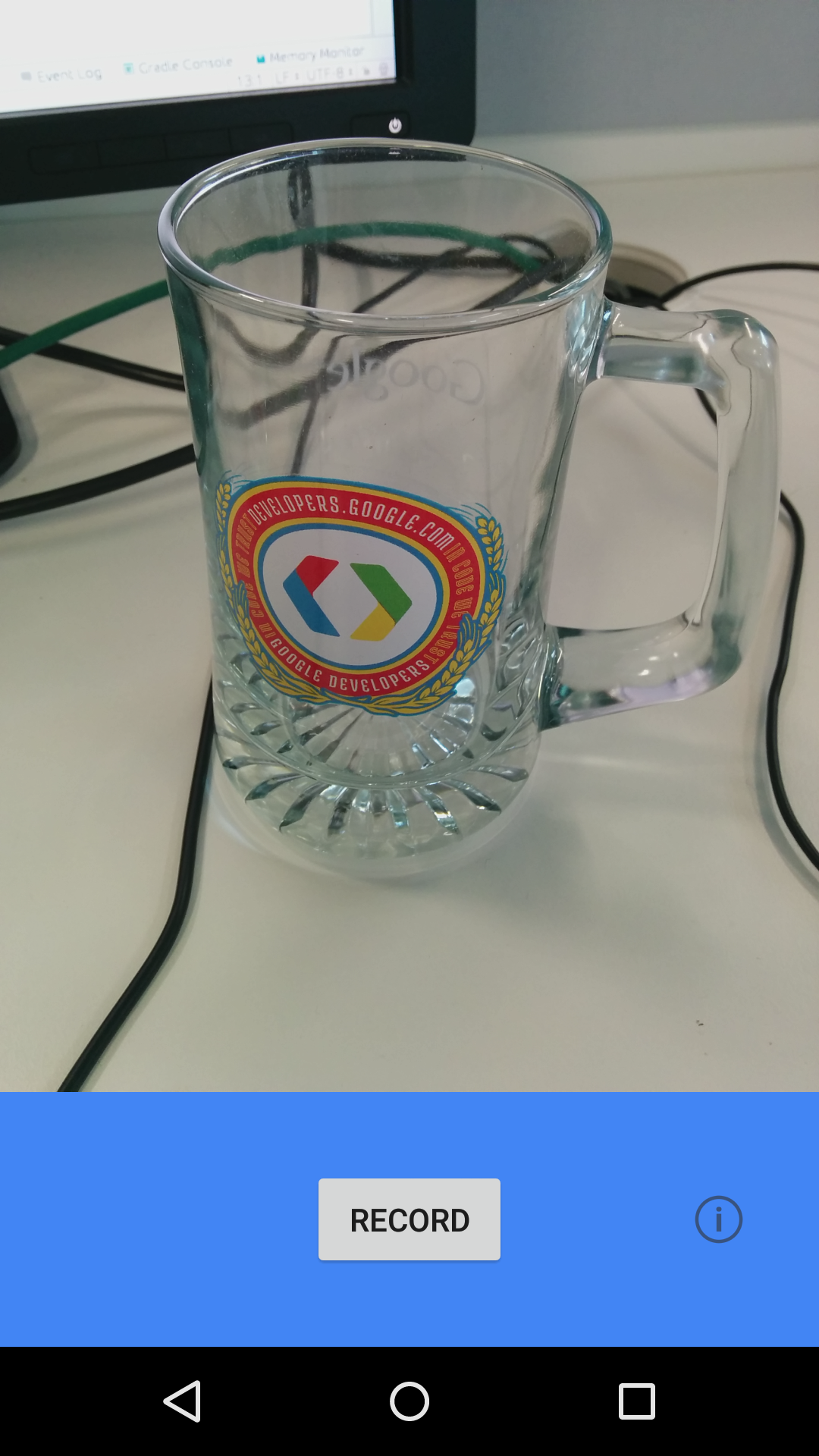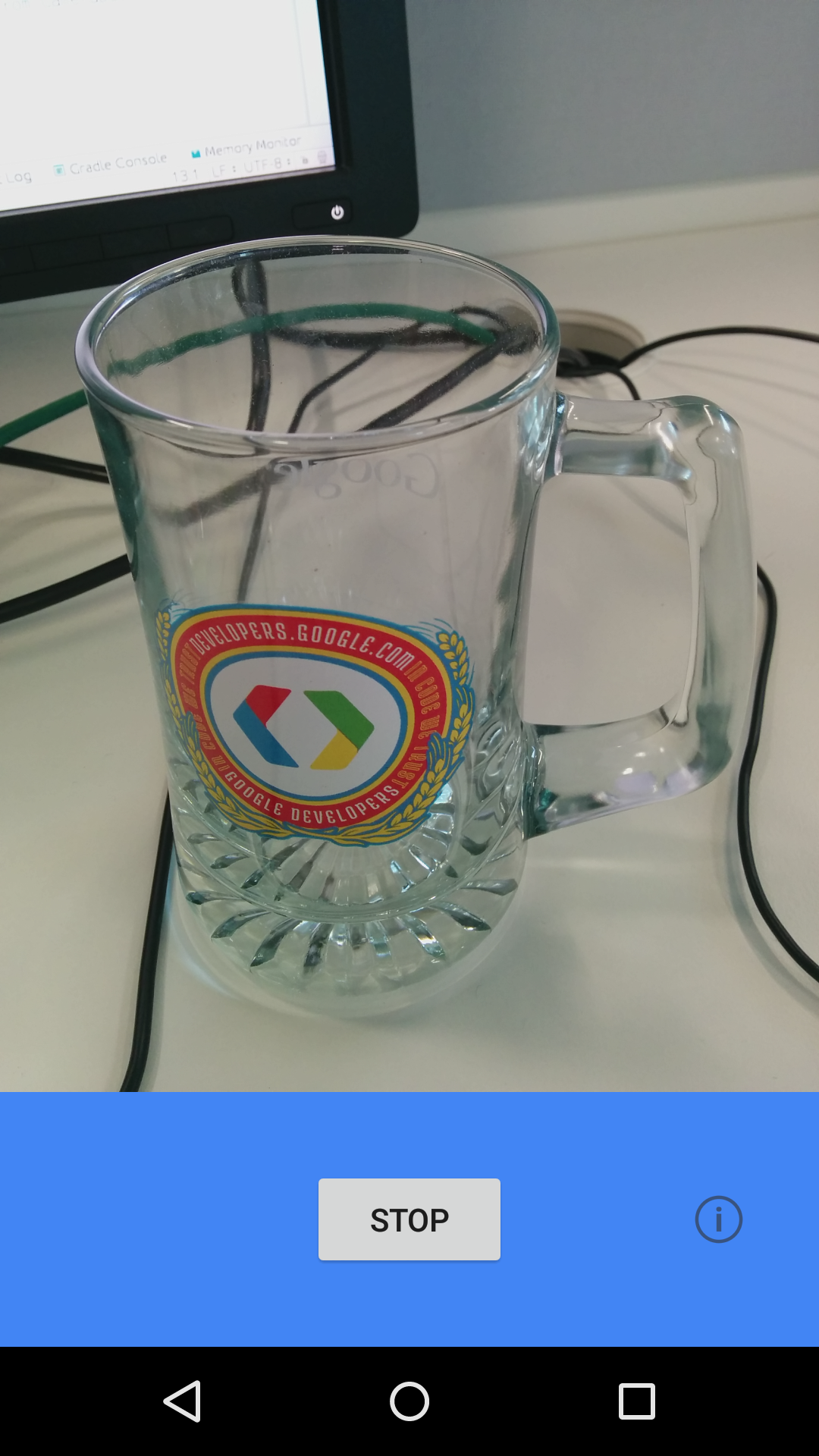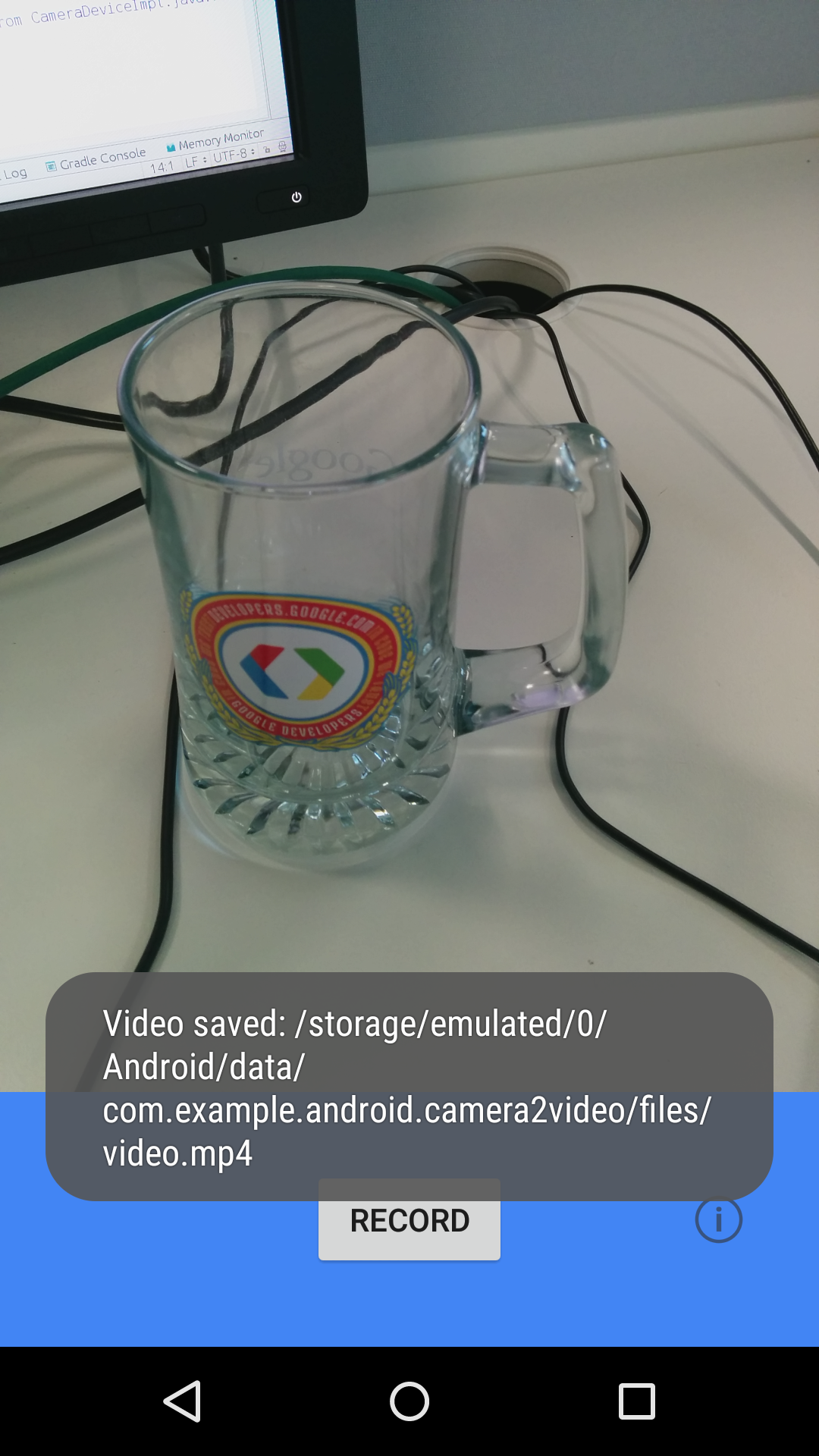Android Camera2Video Sample
This sample shows how to record video using the new Camera2 API in Android Lollipop.
Introduction
Android Lollipop introduced a new camera API, called camera2. This sample uses CameraDevice and CameraCaptureSession to record video. It also uses a custom TextureView to render the output.
The main steps are:
- Create a custom TextureView class and add it to the layout. The purpose of the custom TextureView is
to be able to draw itself according to an aspect ratio, which is set via a public method. Additionally,
the
onMeasure(int widthMeasureSpec, int heightMeasureSpec)method is overridden, using the aspect ratio. - Implement a
TextureView.SurfaceTextureListeneron your TextureView, and override itsonSurfaceTextureSizeChanged(SurfaceTexture surfaceTexture, int width, int height)method to calculate the matrix to apply to the TextureView so the camera output fits. Use the methodsetTransform(matrix)on the TextureView. - Implement a
CameraDevice.StateCallbackto receive events about changes of the state of the camera device. Override its methods to set your CameraDevice instance, start the preview, and stop and release the camera. - When starting the preview, set up the MediaRecorder to accept video format.
- Then, set up a
CaptureRequest.BuilderusingcreateCaptureRequest(CameraDevice.TEMPLATE_RECORD)on your CameraDevice instance. - Then, implement a
CameraCaptureSession.StateCallback, using the methodcreateCaptureSession(surfaces, new CameraCaptureSession.StateCallback(){})on your CameraDevice instance, wheresurfacesis a list consisting of the surface view of your TextureView and the surface of your MediaRecorder instance. - Use
start()andstop()methods on your MediaRecorder instance to actually start and stop the recording. - Lastly, set up and clean up your camera device in
onResume()andonPause().
Pre-requisites
- Android SDK 25
- Android Build Tools v25.0.3
- Android Support Repository
Screenshots
Getting Started
This sample uses the Gradle build system. To build this project, use the "gradlew build" command or use "Import Project" in Android Studio.
Support
- Google+ Community: https://plus.google.com/communities/105153134372062985968
- Stack Overflow: http://stackoverflow.com/questions/tagged/android
If you've found an error in this sample, please file an issue: https://github.com/googlesamples/android-Camera2Video
Patches are encouraged, and may be submitted by forking this project and submitting a pull request through GitHub. Please see CONTRIBUTING.md for more details.
License
Copyright 2017 The Android Open Source Project, Inc.
Licensed to the Apache Software Foundation (ASF) under one or more contributor license agreements. See the NOTICE file distributed with this work for additional information regarding copyright ownership. The ASF licenses this file to you under the Apache License, Version 2.0 (the "License"); you may not use this file except in compliance with the License. You may obtain a copy of the License at
http://www.apache.org/licenses/LICENSE-2.0
Unless required by applicable law or agreed to in writing, software distributed under the License is distributed on an "AS IS" BASIS, WITHOUT WARRANTIES OR CONDITIONS OF ANY KIND, either express or implied. See the License for the specific language governing permissions and limitations under the License.


